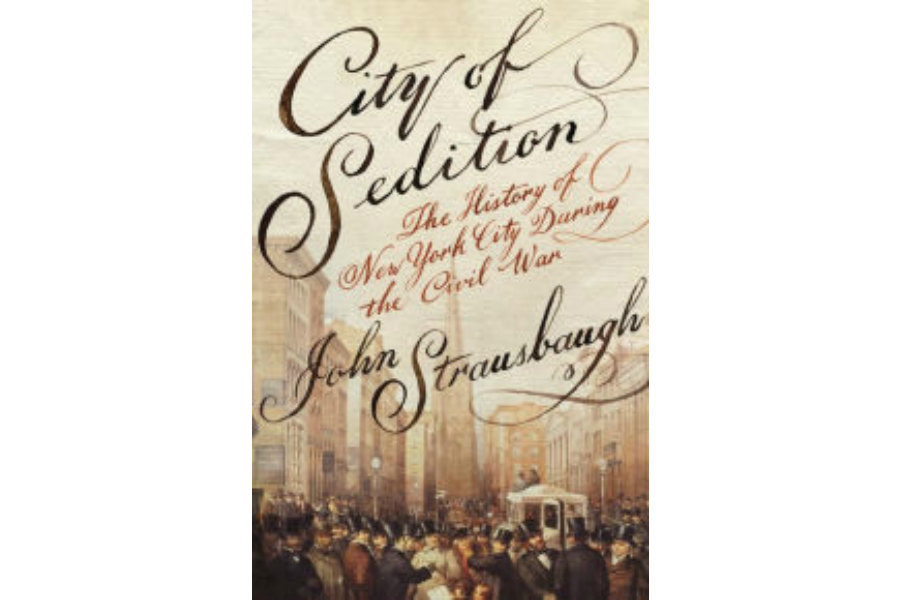5 facts about NYC's surprisingly unheroic response to the Civil War
Loading...
During the Civil War, President Lincoln had few greater headaches than unfriendly fire from the biggest city in the nation.
“No city in the North was more pro-South, antiabolition or anti-Lincoln,” writes historian John Strausbaugh reveals in his fascinating new book City of Sedition: The History of New York City during the Civil War.
But there were plenty of New Yorkers who hated the South, and they launched words – and sometimes weapons – against their slavery-sympathetic foes. Violence roiled the city: Black vs. white, Protestant vs. Catholic, immigrants vs. nativists. All this in a city that helped create the legacy of a man named ... Abraham Lincoln.
Here are 5 surprising facts about the "City of Sedition" during the Civil War:
1. NYC speech gave Lincoln a big boost...
Months before he’d even decided to run for president, Lincoln found fame and political fortune in – of all places – the city that would never warm to him.
As Strausbaugh notes, historian James McPherson has written that “the Lincoln of history would not have existed” if it wasn’t for a successful February 1860 speech at the Cooper Union.
The speech didn’t begin auspiciously. He was nervous (more than ever before in his life, he confessed), and he seemed to pronounce “Mr. Chairman” in a thin, unimpressive voice as “Mr. Cheerman.”
But then he found a groove and won over the crowd: “Let us have faith that right makes might, and in that faith, let us, to the end, dare to do our duty as we understand it.”
In the afterglow, he told a friend that running for president intrigued him: “the taste of it is in my mouth a little.”
2. ... and a photo helped seal his future
Before he made the speech, Lincoln dropped by the studio of a photographer named Matthew Brady. Wearing a new silk top hat that someone just gave him to replace his old beaver hat, he held a pose. And held it some more. Exposures back then took forever.
In the photo, he looks “self-conscious and ill at ease, even a little melancholy,” Strausbaugh writes. Even so, “it would be the most important photograph not only of his life, but maybe of the century.” It would help him win two elections – although not in NYC, where voters turned him down twice – and a kind of American sainthood.
3. Slavery and NYC were bosom buddies
A chain of greed and greenbacks linked New York City, the South and slavery, and it turned out to be mighty hard to break.
Here’s how it worked: Slaves picked cotton. Plantation owners sent the cotton to NYC, where it would be transferred to New England or all the way to Europe to be woven into clothing. Then a lot of these clothes would come back to New York City to be sold.
Meanwhile, plantation owners turned to NYC bankers for loans when they wanted to buy more slaves. It was a vicious cycle, inspiring one Southerner to complain about the South’s “unmanly and unnational dependence” on the Northern states.
4. Slavery divided NYC churches
Slavery’s opponents included Evangelicals who distrusted Catholics, thinking them un-American.This didn’t help the anti-slavery cause with Catholics, including many Irish immigrants who feared losing their jobs if black slaves became free and headed North.
In fact, Strausbaugh writes, a glut of Irish workers took jobs from blacks who were already in the city. The Irish were more desperate and would work for less. But the city’s stern-minded bishop ignored this reality.
When a Protestant mob prepared to torch a cathedral, he threatened to burn down the city. But he turned an even more persistent kind of fury on those who dared to question slavery.
5. Draft riots drove away blacks forever
By 1863, the North needed 300,000 more soldiers to fight the Civil War. Lincoln turned to a draft that allowed drafted men to avoid serving by paying $300 or finding a replacement. This disastrous policy convinced many that they were in “a rich man’s war but a poor man’s fight.”
Tensions rose and exploded in days of bloody riots, with mobs besieging the homes of blacks and supporters of the war. The violence would take many lives, although 237 black children at an orphanage were spared.
Many African-Americans would flee the city, lowering its population of blacks by 20 percent and prompting more segregation and more separation from whites. This newfound chasm in racial relations would linger long beyond the North’s victory, a tainted legacy of the hatred lurking in a great city.
Randy Dotinga, a Monitor contributor, is a board member and immediate past president of the American Society of Journalists and Authors.







